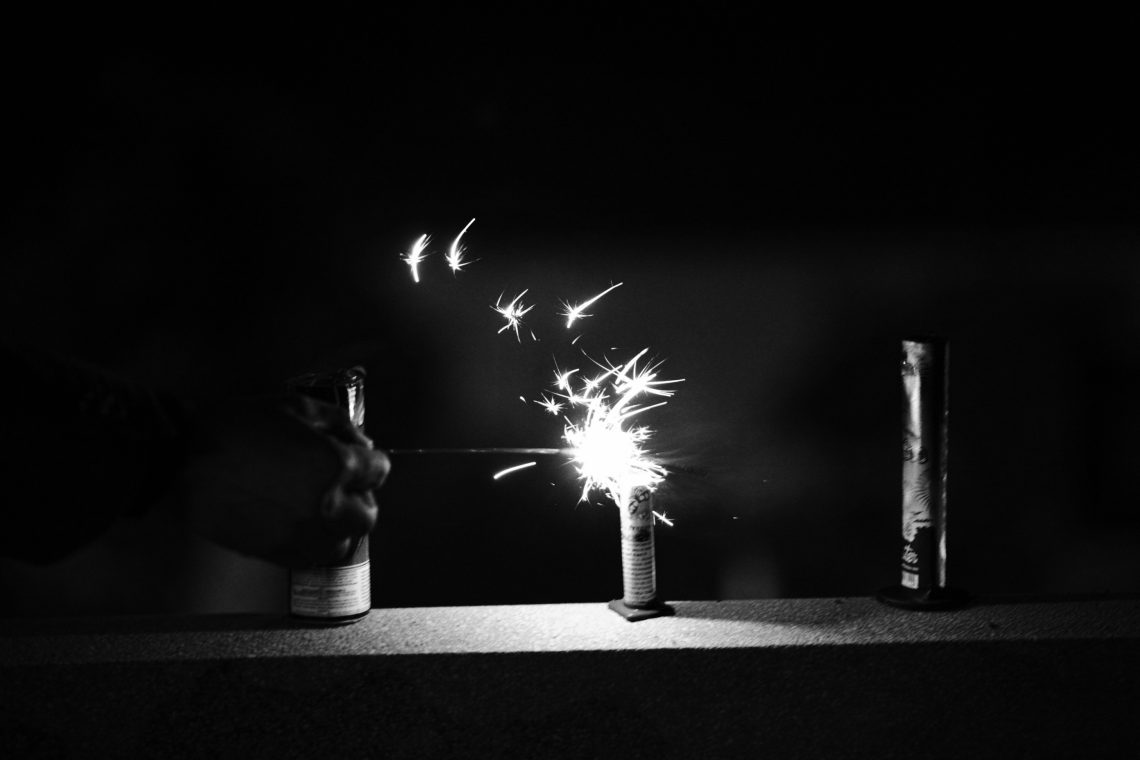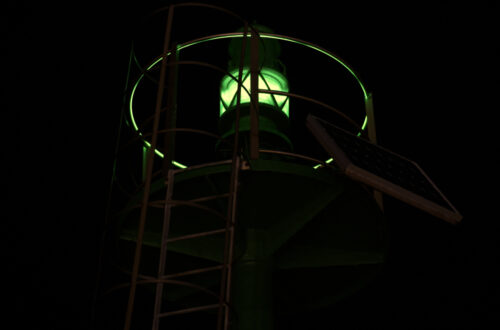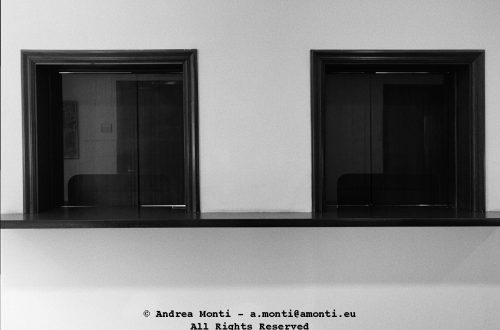
Fireworks on Film
There is a different kind of alchemy at play when working with Kodak T-Max 400. Unlike Tri-X, with its pronounced, almost romantic grain structure, T-Max offers a modern, cleaner rendering — sharper edges, smoother tonal transitions, and a capacity for detail that rewards precision. This photograph, made during the fleeting moment of lighting a fuse, plays perfectly to the film’s strengths.
The composition is minimal and deliberate: three vertical elements in a horizontal frame — two cylindrical fireworks flanking the central act — with a hand entering from the left. The eye is drawn instantly to the burst of sparks, frozen mid-flight, their delicate lines rendered with razor clarity. Against the deep, uncluttered black of the background, each spark stands out as though etched in fine silver.
Exposure in this kind of scene is a balancing act. The brilliance of ignition can easily overwhelm the frame, but here, the highlights are carefully contained, allowing detail to remain visible in the arcs of light. The shadows — rich and full — still hold enough information to define the hand, the cylindrical forms, and the texture of the ledge beneath them. T-Max’s finer grain structure ensures these elements stay crisp rather than dissolving into noise.
The shallow depth of field isolates the act, creating a miniature stage for the drama of combustion. With the background dissolved into pure absence, the photograph becomes almost a study in contrast: permanence against transience, darkness against fire.
What makes this image compelling is the precision with which the fleeting is captured. The film’s high acutance and smooth tonal scale give the scene a contemporary crispness, yet the subject — fire’s brief bloom — remains as old and primal as photography itself. In T-Max 400, the moment is not only preserved; it is refined.




